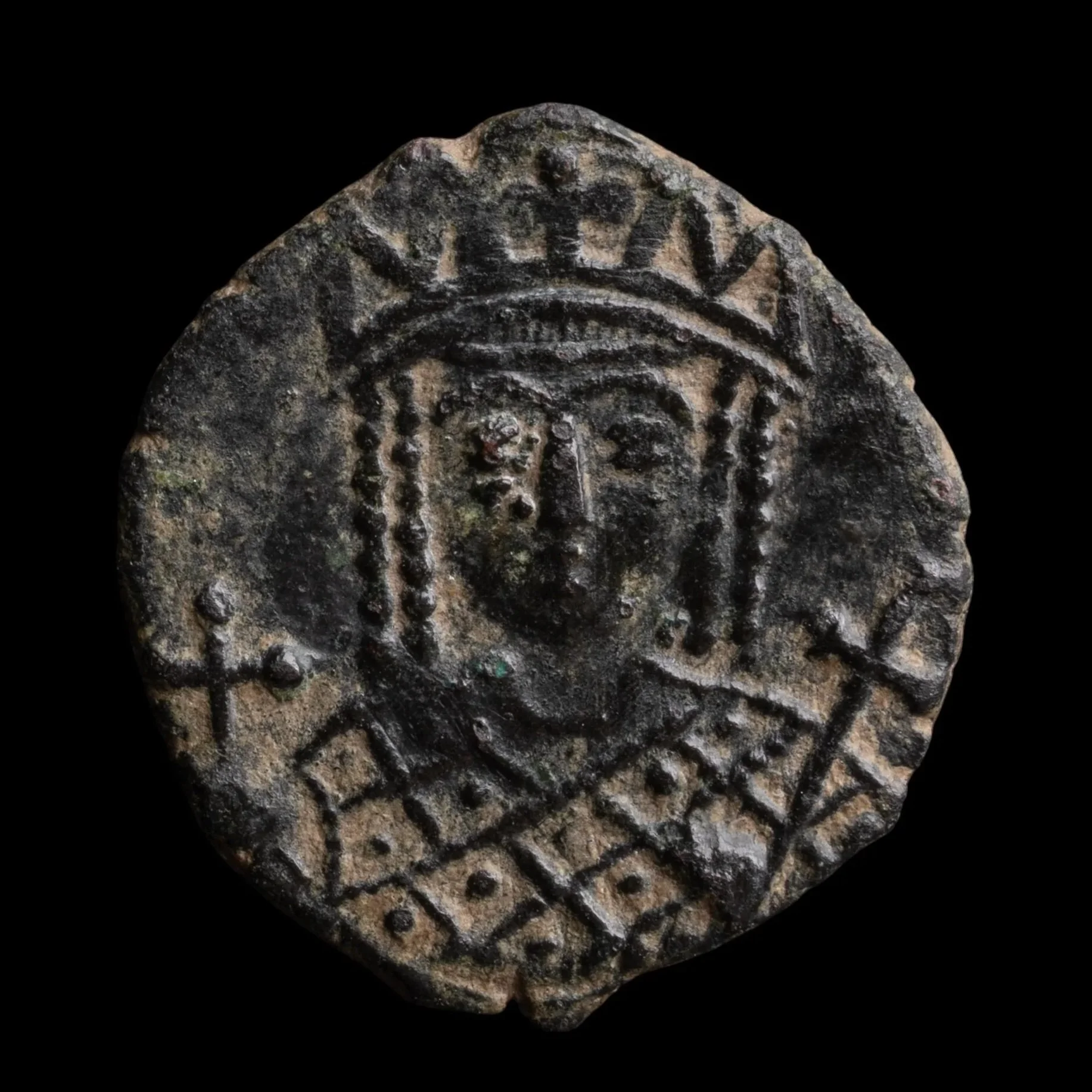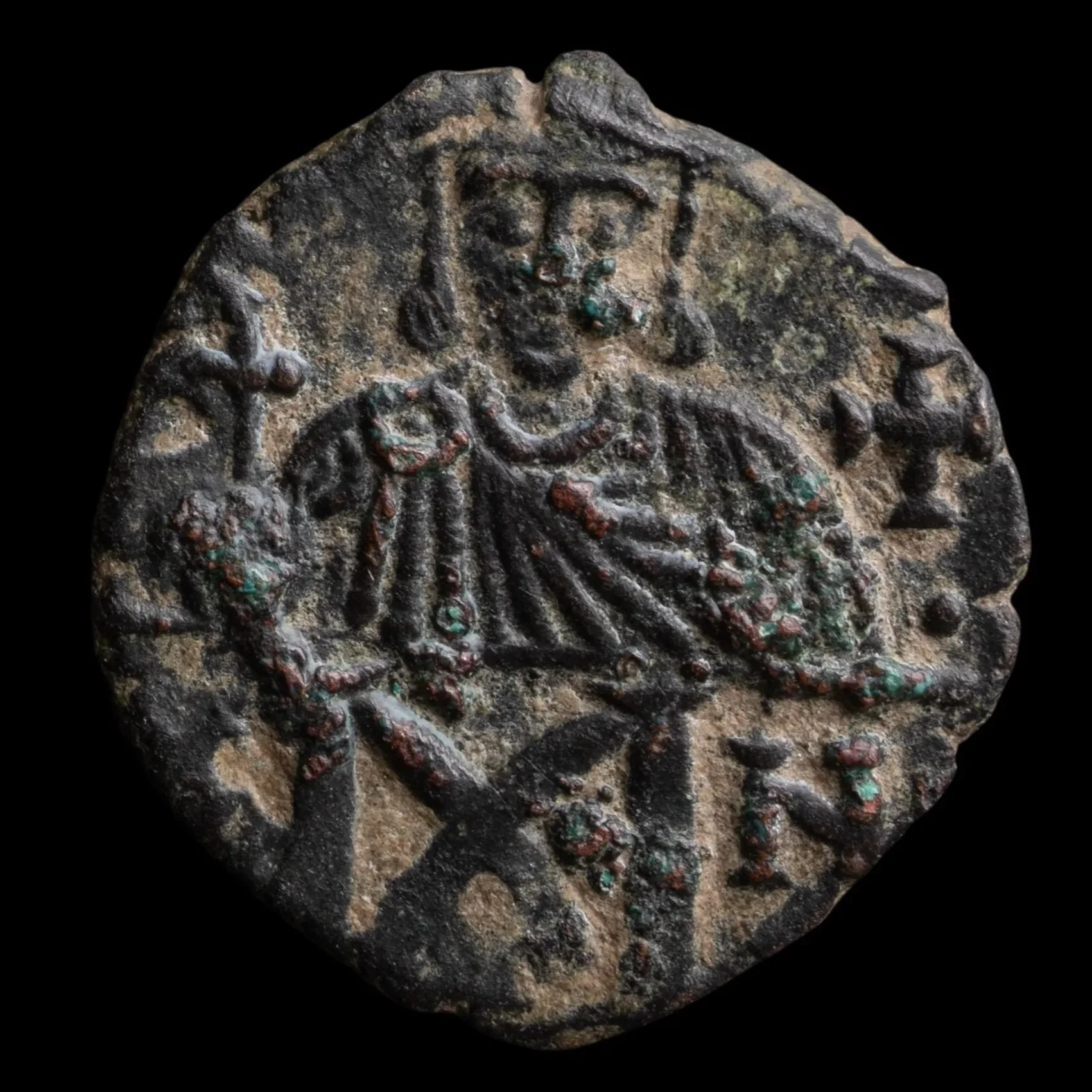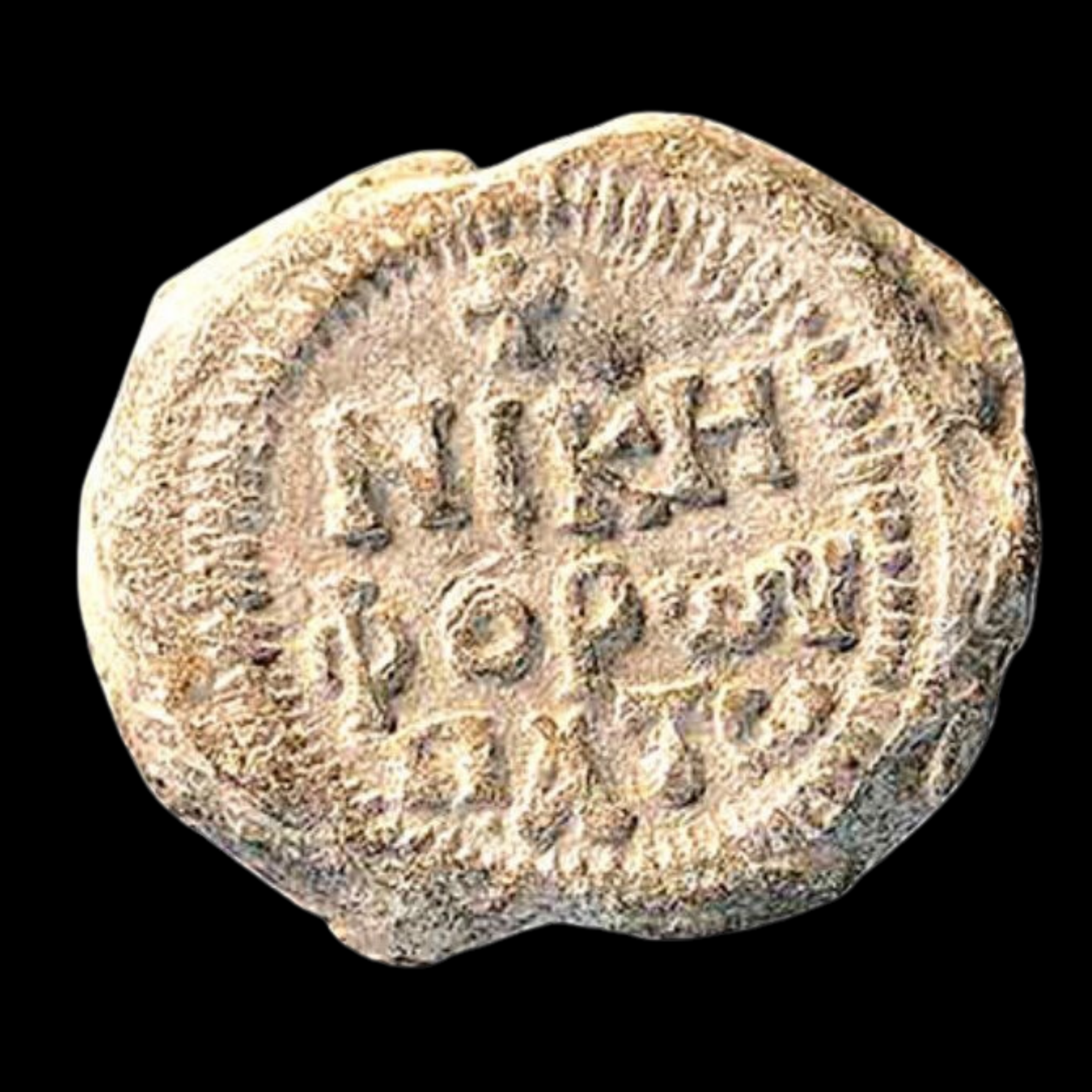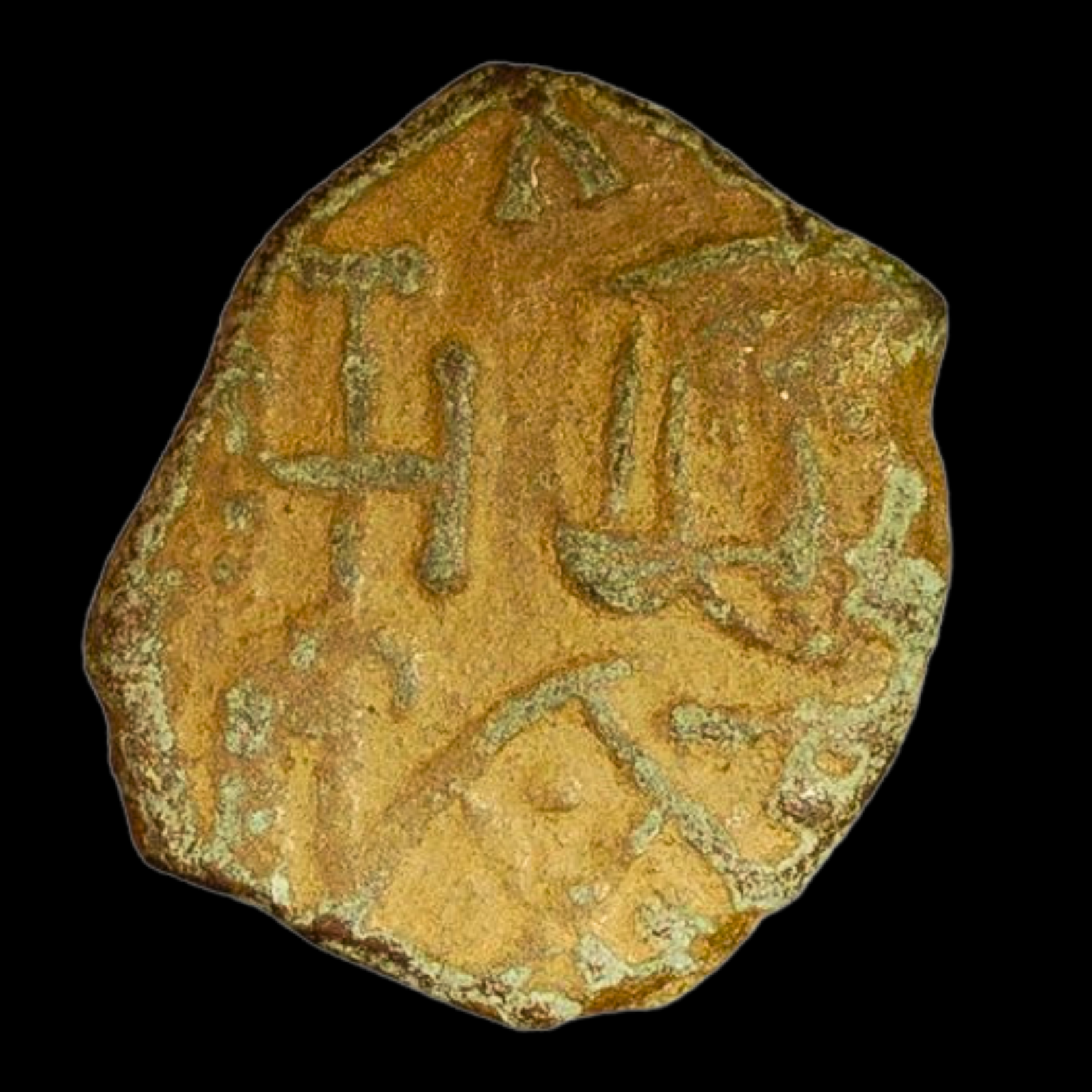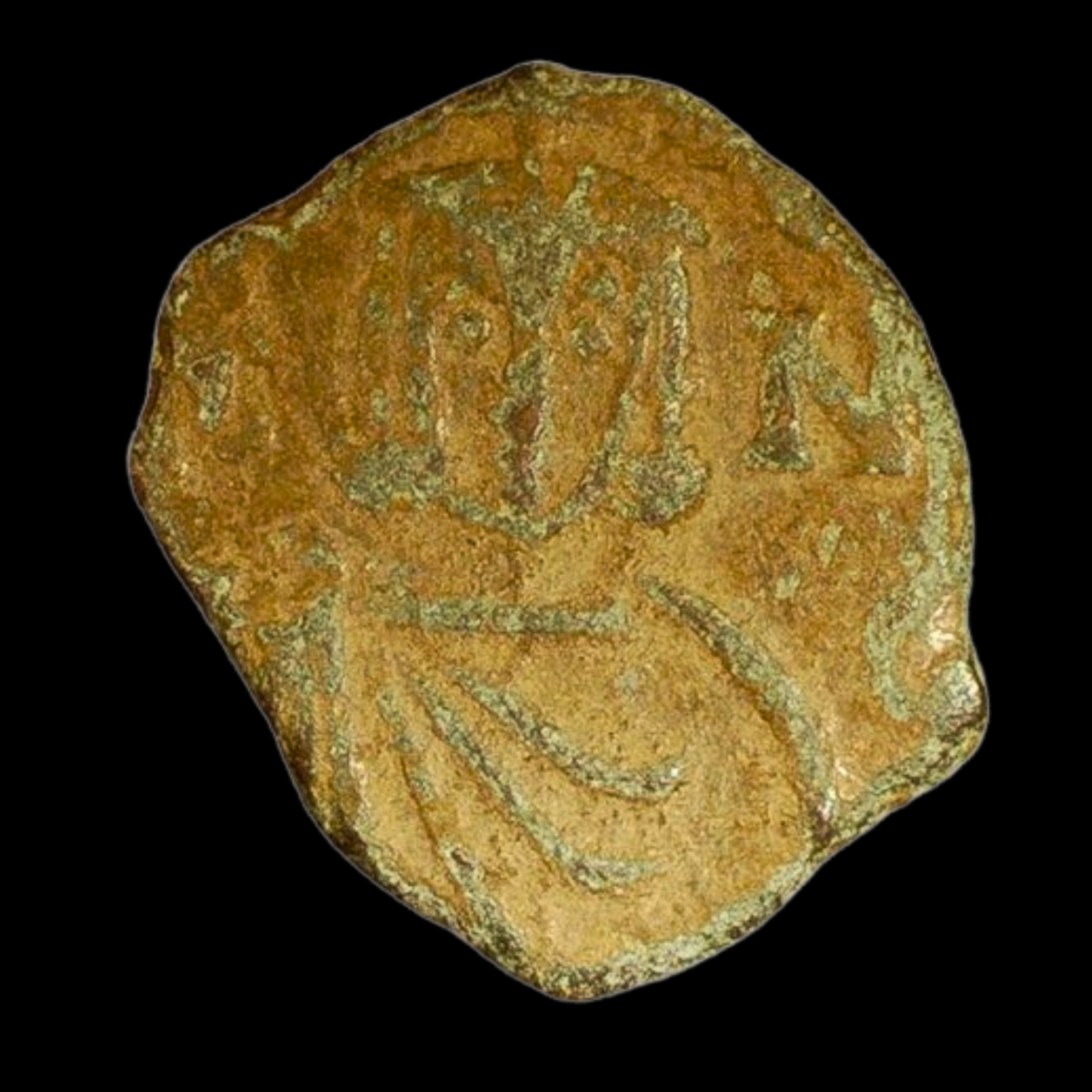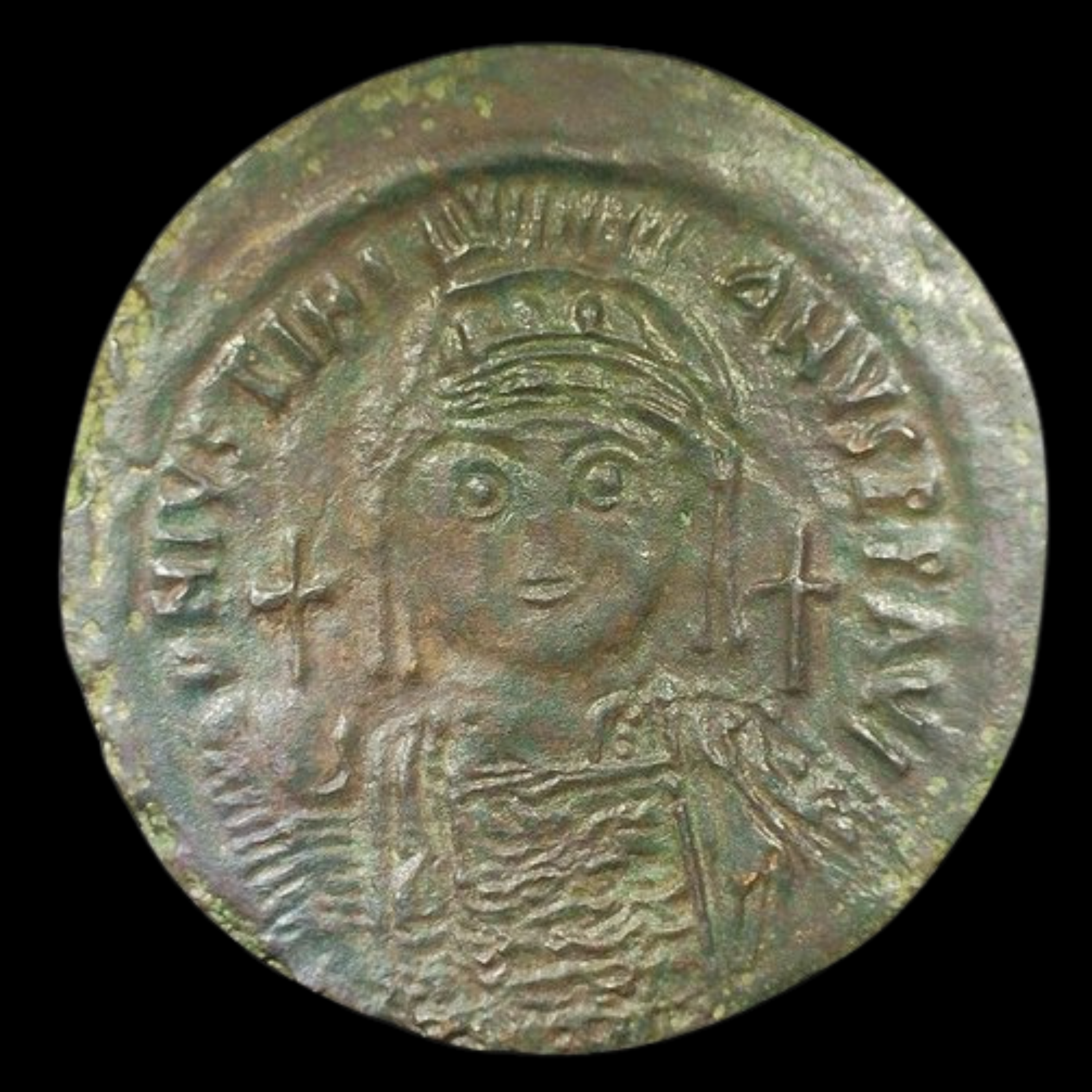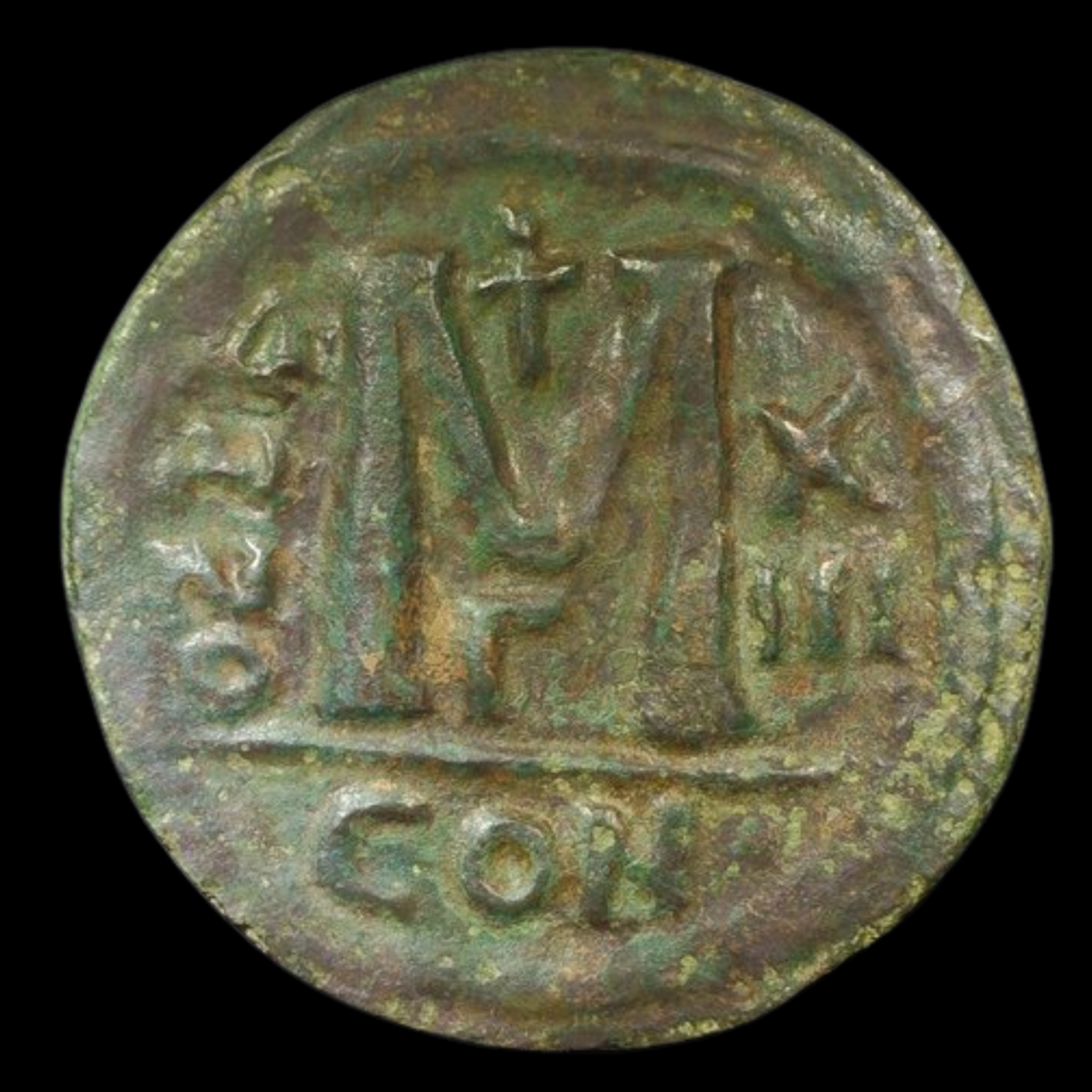 Image 1 of 1
Image 1 of 1


Byzantine Bronze Follis of Justinian I (about 1,485 years ago)
This bronze follis was issued by Emperor Justinian I "the Great" during his long reign over the Byzantine Empire (527-565 CE). Minted in Constantinople (modern Istanbul, Turkey) or other imperial mints, this coin represents the empire during its ambitious period of attempted reconquest and cultural revival.
Coin Description:
Front side: Depicts Emperor Justinian I facing forward, wearing a crown with pendilia (hanging ornaments) and imperial robes. He typically holds a globus cruciger (orb topped with a cross) symbolizing Christian dominion over the world.
Back side: Features a large letter "M" (representing 40 nummi) with a cross above, the mint mark and date below, and often the Greek numerals for the year of reign. The inscription "ANNO" followed by regnal year numerals indicates the emperor's year on the throne.
Technical Details:
Material: Bronze
Denomination: Follis (40 nummi, a standard Byzantine bronze unit)
Minting date/period: 539 CE (approximately 1,485 years ago)
Condition: Varies by specimen
Historical Significance:
This coin circulated during the zenith of Justinian's ambitious reign, when he attempted to restore the Roman Empire to its former glory. Working alongside his powerful wife Empress Theodora, Justinian's generals temporarily reconquered territories in North Africa, Italy, and Spain. His legal reforms produced the Corpus Juris Civilis, which forms the basis of civil law in many modern countries. Despite the devastating Plague of Justinian that undermined his military campaigns, his reign represented Byzantine culture's golden age, marked by architectural marvels like the Hagia Sophia in Constantinople, which remained Christendom's greatest city.
This bronze follis was issued by Emperor Justinian I "the Great" during his long reign over the Byzantine Empire (527-565 CE). Minted in Constantinople (modern Istanbul, Turkey) or other imperial mints, this coin represents the empire during its ambitious period of attempted reconquest and cultural revival.
Coin Description:
Front side: Depicts Emperor Justinian I facing forward, wearing a crown with pendilia (hanging ornaments) and imperial robes. He typically holds a globus cruciger (orb topped with a cross) symbolizing Christian dominion over the world.
Back side: Features a large letter "M" (representing 40 nummi) with a cross above, the mint mark and date below, and often the Greek numerals for the year of reign. The inscription "ANNO" followed by regnal year numerals indicates the emperor's year on the throne.
Technical Details:
Material: Bronze
Denomination: Follis (40 nummi, a standard Byzantine bronze unit)
Minting date/period: 539 CE (approximately 1,485 years ago)
Condition: Varies by specimen
Historical Significance:
This coin circulated during the zenith of Justinian's ambitious reign, when he attempted to restore the Roman Empire to its former glory. Working alongside his powerful wife Empress Theodora, Justinian's generals temporarily reconquered territories in North Africa, Italy, and Spain. His legal reforms produced the Corpus Juris Civilis, which forms the basis of civil law in many modern countries. Despite the devastating Plague of Justinian that undermined his military campaigns, his reign represented Byzantine culture's golden age, marked by architectural marvels like the Hagia Sophia in Constantinople, which remained Christendom's greatest city.


